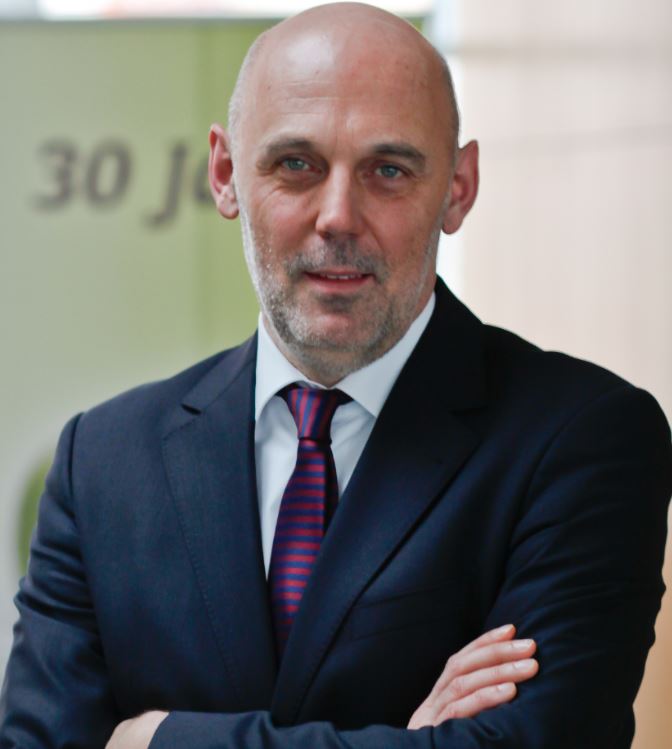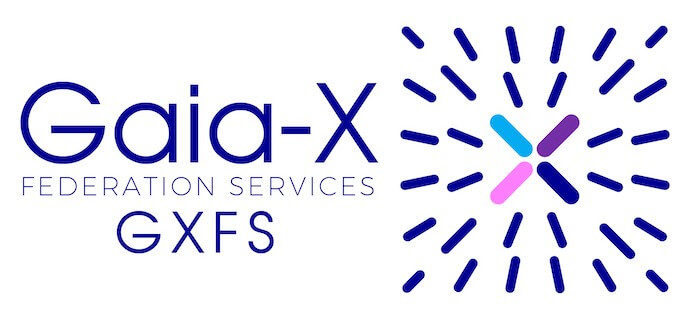An interview with Bruno Ristok, Computer und Software GmbH

Whether with MS-DOS, the Apple Newton or Gaia-X – for 40 years, C&S Computer and Software has been digitising the healthcare industry. In an interview, Managing Director Bruno Ristok now presents his work in the TEAM-X project. Which role the focus on the common good plays in data flows in outpatient care. And how Gaia-X provides solutions for the banality of everyday life.
Mr Ristok, what does TEAM-X do?
The project is creating a secure, trustworthy and digital data ecosystem. Gaia-X lays the foundation for the so-called Trusted Ecosystem of Applied Medical Data eXchange; TEAM-X. The distributed and connected data infrastructure should make it possible to realise new business models, digital products and smart services for the supply sector.
What does that mean in practice?
For example, TEAM-X deals with outpatient care. It was not only the Covid-19 pandemic that made us all aware that labour is scarce but the demand is huge. On top of that, everyone would prefer to be cared for within their own four walls if the worst comes to the worst. Digitalisation provides smart technological solutions for both. From voice assistants to health apps and connected drinking cups to smart plasters – devices like these help in everyday life but also relieve the burden on care services.
What is your role in the project?
We are building the necessary digital care platform as a consortium partner. A platform where all the information comes together in the end. And not only to realise smart services for supply, but also to explore potentials with all other domains that are based on Gaia-X’s standardised and open architecture.
What will the care platform enable?
To a certain extent, the platform sees itself as middleware. Over 200 sensors and devices are already docked. We integrate the data streams and make them available in an open app. In this way, we relieve the device manufacturers of the interface work on the one hand and open up new possibilities for people in need of care, care services, relatives and doctors on the other hand to find solutions for questions that arise from the banality of everyday care.
What banalities are you thinking of?
If you live in the same town as your parents who need care, you can quickly check in on them and make sure that everything is OK. It’s different when elderly parents live far away. Our platform can help to introduce services thanks to which those who need care can structure their everyday life in a self-determined way, while relatives can keep an eye on visits from the care service or medication intake from a distance, for example. The same applies to family doctors, who can recognise whether older people are doing enough exercise and eating a balanced diet. After all, both can, in turn, reduce one’s own risk of needing care, for example with regard to cardiovascular diseases.
Data sharing in the health sector – how open-minded are the stakeholders in your project?
Care services and facilities are united by their orientation towards the common good. People and their individual needs are the focus in a special way. This attitude explains why the industry has always been looking for ways to improve care. Data sharing is no exception.
What does this mean for TEAM-X?
Today, digital devices are the standard everywhere for documenting, billing and revenue-oriented planning of care services. And with the structural model for care of the elderly, there is a uniform digital template by means of which the necessary needs for help and their professional processing are well mapped. Information relevant to us is, therefore, already available in a well-structured and virtually universal electronic form.
And how can this facilitate the work of care services?
Those who work with the structural model only have to document to what extent services deviate from the planned routine. Until now, I have had to sit down at the computer, click through various input masks and type short reports: a time-consuming process that we want to shorten and speed up via voice input. Thanks to smart technologies, there is more time for care.
What do people in need of care get out of it?
If data is integrated across sectors in a Gaia-X-compliant manner, then scenarios are conceivable in which people in need of care not only plan their visits to the doctor via voice assistant, but also book the necessary means of transport fully automatically at the same time – whether wheelchair-accessible ambulance transport, an Uber or shared taxi. Mobility data available in Gaia-X make it possible.
Longer self-determined living at home, thanks to smart, digital helpers – what could possibly stand in the way of that?
Actually financing it! If you want to equip your home with the technology, you have to be able to pay for it out of your own pocket. Currently, long-term care insurance is structured in such a way that opportunities are thwarted. And on top of that, there are also people who, with good reason, choose not to be digitally connected. So in the future, people must remain responsive to people.
Speaking of the future: Your company has been digitalising the healthcare industry for 40 years. How have the challenges changed since then?
C&S Computer and Software has been providing IT solutions to the social economy since 1983. For example, we set up the first documentation for geriatric care in Germany with MS-DOS and, at the beginning of the 1990s, we developed a solution to record care services on the move with the Apple Newton – one of the very first handheld computers. In retrospect, only the means have changed. What has remained the same is the central question of how to improve care. Now, with TEAM-X and Gaia-X, we are finding a safe and sovereign answer to this.
Thank you for the interview!
By Nils Klute, IT Editor and Project Manager Communication at EuroCloud Germany
